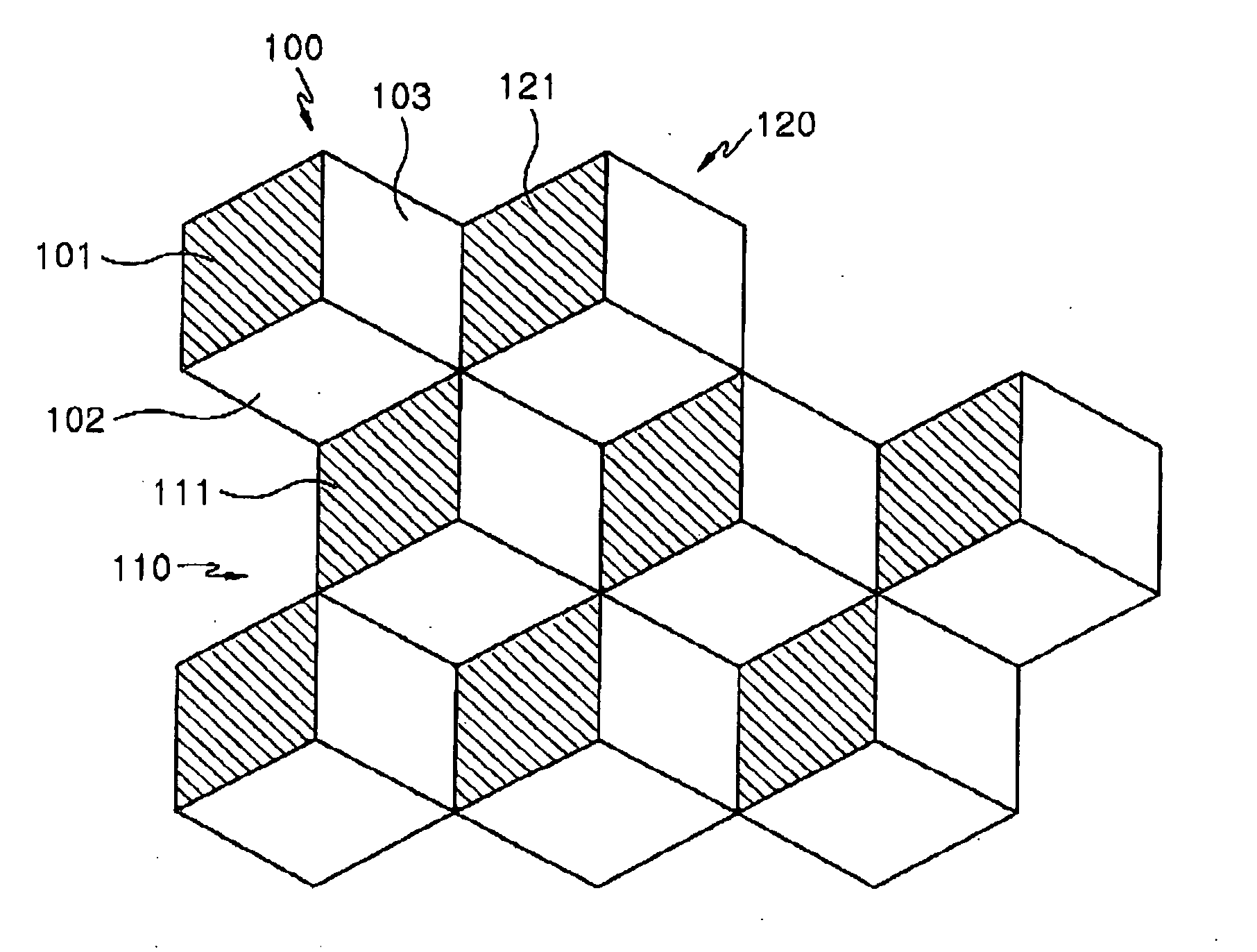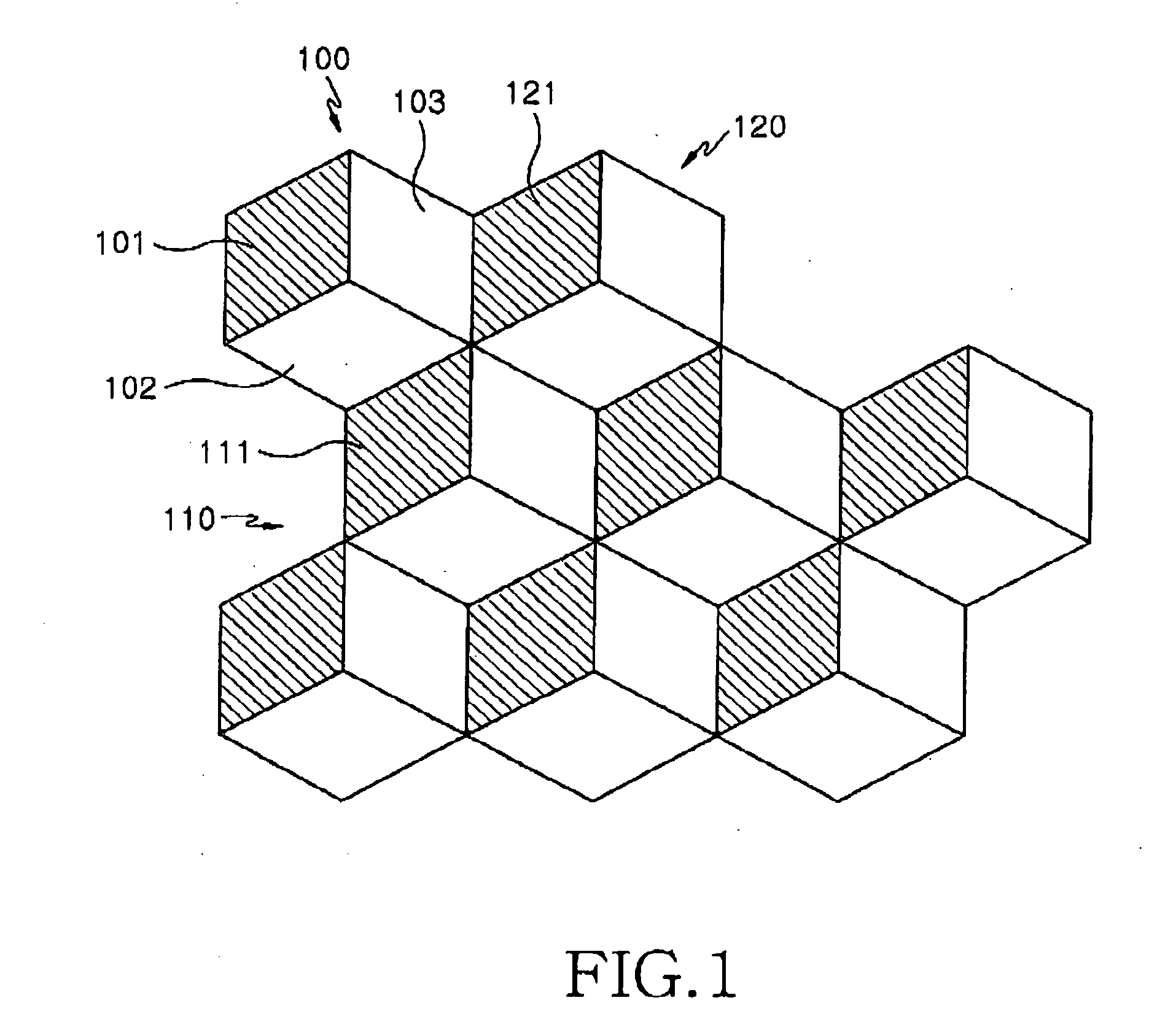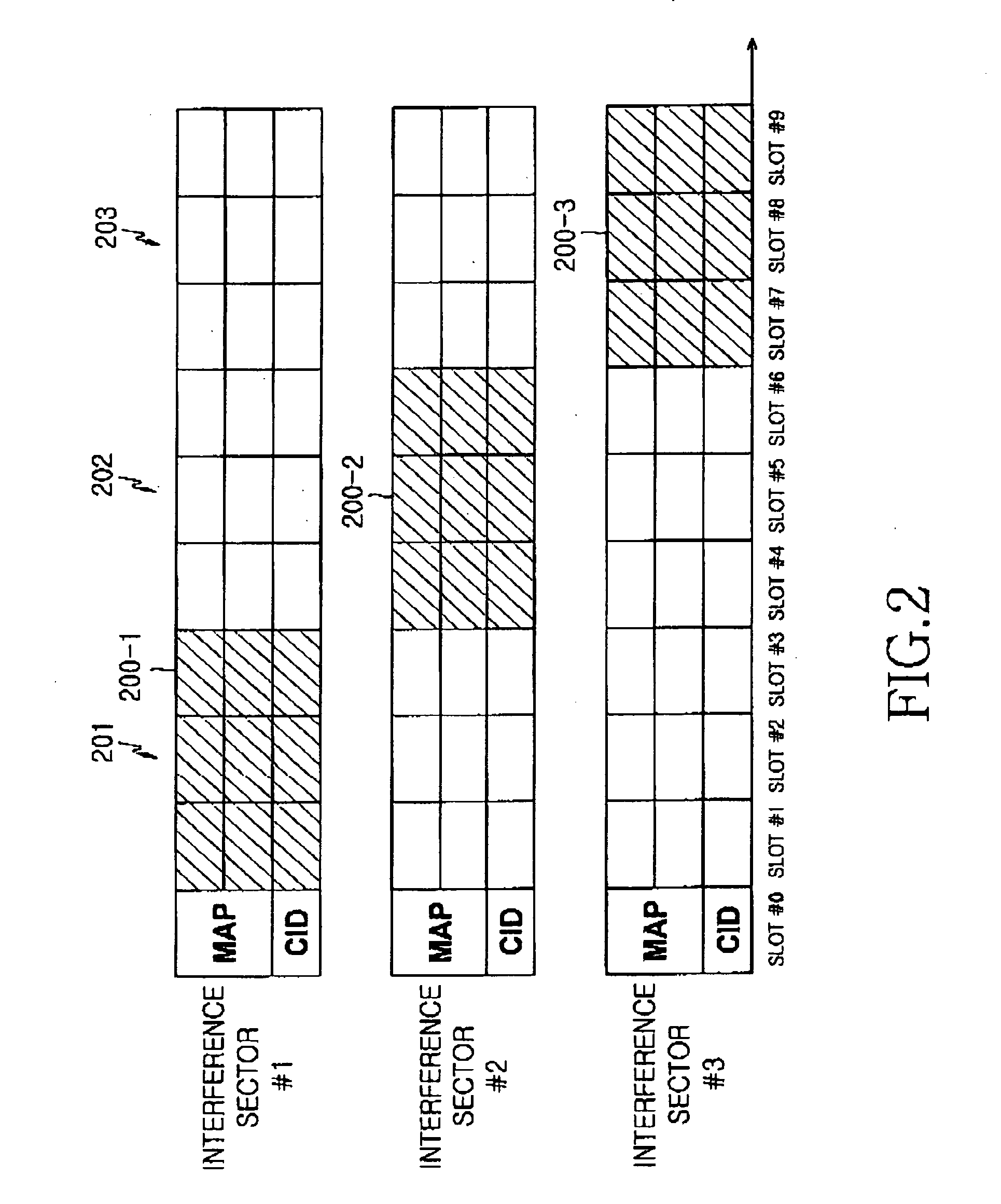Resource allocation scheduling method for a cellular communication system
- Summary
- Abstract
- Description
- Claims
- Application Information
AI Technical Summary
Benefits of technology
Problems solved by technology
Method used
Image
Examples
Embodiment Construction
[0018] Preferred embodiments of the present invention will be described in detail hereinafter with reference to the accompanying drawings. In the following description of the present invention, a detailed description of known functions and configurations incorporated herein will be omitted when it may obscure the subject matter of the present invention.
[0019]FIG. 1 illustrates a cellular system including hexagonal cells to which the present invention is applied. Referring to FIG. 1, each cell is divided into three sectors. All cells are allocated with the same frequency band, and sectors 101, 102, and 103 that constitute a cell 100 are allocated with different resources. Additionally, the respective sectors in the cell are designed to be allocated with resources different from those of the adjacent sectors of the adjacent cells. In the present invention, sectors that use the same frequency in different cells are called “interference sectors”. In FIG. 1, the interference sectors of ...
PUM
 Login to View More
Login to View More Abstract
Description
Claims
Application Information
 Login to View More
Login to View More - R&D
- Intellectual Property
- Life Sciences
- Materials
- Tech Scout
- Unparalleled Data Quality
- Higher Quality Content
- 60% Fewer Hallucinations
Browse by: Latest US Patents, China's latest patents, Technical Efficacy Thesaurus, Application Domain, Technology Topic, Popular Technical Reports.
© 2025 PatSnap. All rights reserved.Legal|Privacy policy|Modern Slavery Act Transparency Statement|Sitemap|About US| Contact US: help@patsnap.com



